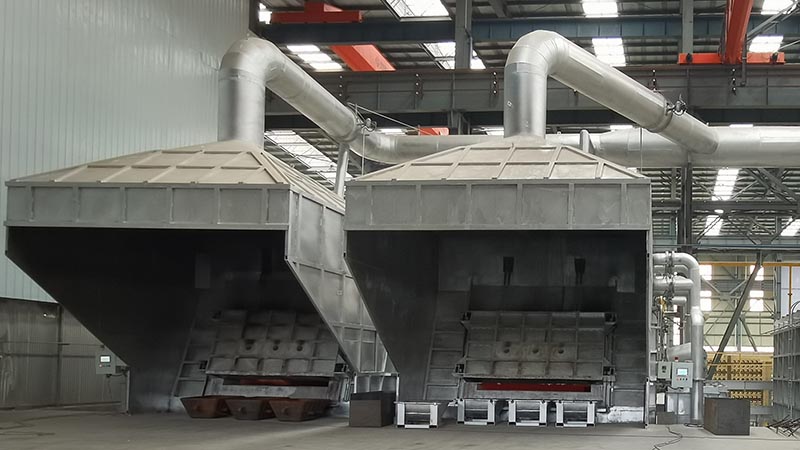Malfunctions and Solutions for Aluminum Melting Furnaces
Aluminum melting furnaces play a vital role in aluminum processing, where stable operation directly affects production efficiency and safety. Extended operation can lead to shutdowns due to combustion system failures, electrical malfunctions, and furnace body coking. This article provides an overview of common issues and effective solutions for maintaining optimal furnace performance.
Combustion System Failures
Combustion system failures commonly manifest as weak or extinguished flames, ignition difficulties, or black smoke from chimneys. Fluctuating flames usually indicate insufficient gas pressure, often caused by faulty liquefied gas tank valves, regulator issues, or pipeline leaks. To resolve this, check the gas system pressure and inspect the pipelines for leaks.
Flame extinction at high fan speeds and black smoke at low speeds typically points to an air pressure imbalance, often caused by clogged fan filters, excessive biomass feeding, or insufficient compressed air pressure. Cleaning filters, pausing biomass feeding for 5 minutes before adjusting rates, and ensuring proper air compressor operation can help fix these issues.
Burner coking, caused by fuel impurities, can occur when inferior biomass pellets clog nozzles within hours of operation. Switching to high-quality wood pellets and performing regular burner decoking can prevent this problem.
Electrical Control Failures
Electrical control failures can halt furnace operation and damage equipment. One common issue is a three-phase current imbalance, leading to overcurrent trips and component damage. Installing automatic cut-off devices and enforcing power shutdowns during tilting or charging operations can help prevent this.
Power control failures may result from short-circuited potentiometers, missing 22V inverter pulse power, or medium-frequency interference. Troubleshooting involves checking voltage, inspecting capacitors and thyristors, and ensuring proper signal shielding in control cabinets to minimize interference.
Furnace Structural Failures
Structural and operational issues, such as flue and chamber blockages, can cause pressure spikes and flame blowbacks, requiring shutdowns for cleaning. Regular maintenance, particularly after each shift, is essential to prevent such blockages.
Molten aluminum leaks and explosions are often caused by overfilling due to failed level sensors or malfunctioning discharge ports. Preventing this involves pre-shift sensor checks, maintaining ladle levels 100mm below rims, and ensuring proper supervision during transfers.
Maintenance Approach
A systematic maintenance approach is crucial for preventing major failures. Regular tasks include checking gas pressure, cleaning filters, performing sensor checks, and verifying system components. For example, resolving flame instability and black smoke issues requires quick adjustments to biomass feeding and gas system settings. High furnace pressure demands immediate shutdown and cleaning.
Preventive maintenance should include daily sensor checks, weekly burner decoking, and monthly inspections of flue and refractory components to ensure ongoing furnace efficiency.
Preventive Maintenance and Procedures
Preventive maintenance and standardized procedures are key to avoiding serious failures. Minor issues, such as missed sensor checks or biomass coking particles, can escalate into significant problems. Research shows that 15-minute pre-shift inspections can reduce unexpected failures by up to 80%.
Implementing a fault-tree operation checklist system ensures proactive maintenance and safety. For example, a plant that adopted daily filter cleaning and pre-shift sensor checks reduced combustion failures by 70% and eliminated overflows, transitioning from reactive repairs to a proactive safety control approach.



